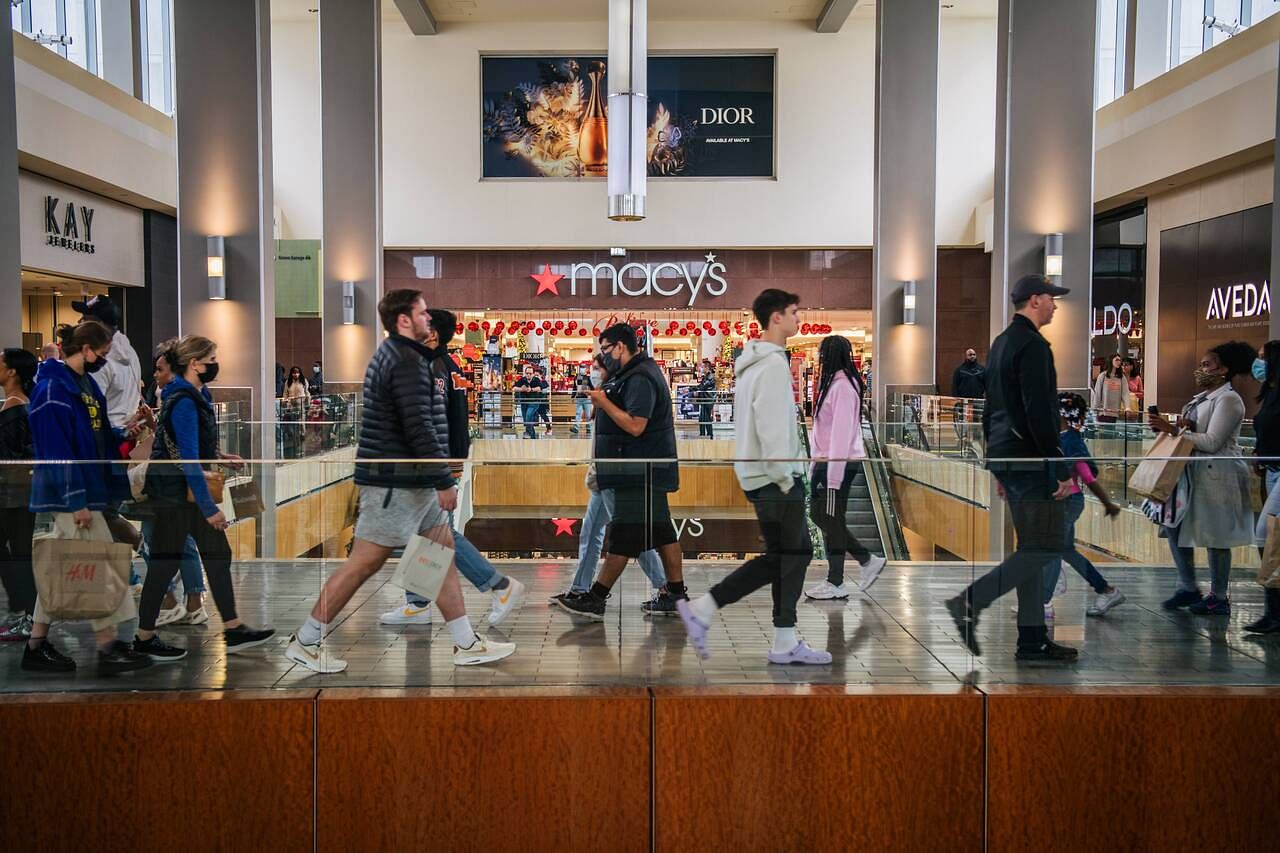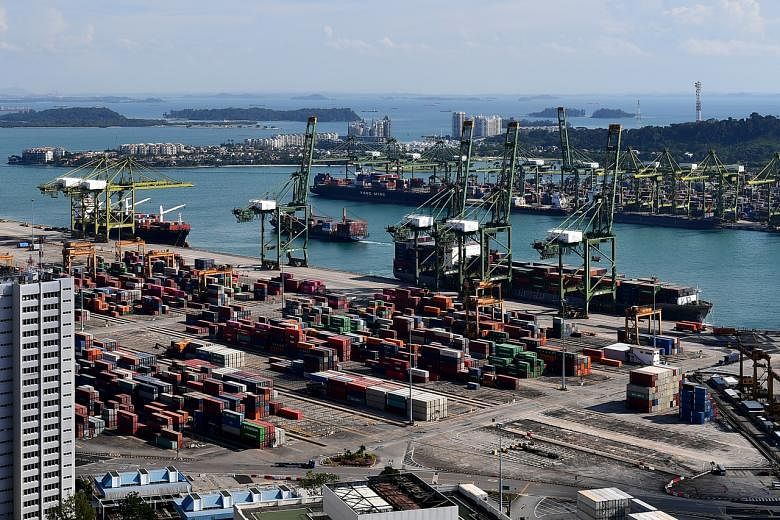SINGAPORE - Exports seem to have defied supply disruptions stemming from the pandemic but persistent stress on global supply chains may have ramifications down the line for a trade-dependent economy like Singapore.
Inflation is the immediate threat, of course, but another longer-term risk looms for Singapore, given that it is mainly a producer of intermediate goods and components.
If the global sourcing networks for such inputs undergo an unexpected and unfavourable reconfiguration, there may be a painful economic adjustment needed here in coming years.
The off-and-on Covid-19 lockdowns, an acute shortage of semiconductors, port closures, container shortages, reduced air cargo capacity and recent extreme weather events have pushed up logistics costs, manufacturing input prices and supplier delivery times.
Travel curbs have also cut down the supply of workers, worsening the increasing skills disparities and mismatch, pushing up wages as another source of higher business costs.
Consumer prices here are around their highest levels in eight years, and in the United States they are rising at their fastest pace since 1990. Even in China, where economic growth has slowed down in recent months, the producer price index - which reflects industrial input costs - is at the highest since 1995.
A recent HSBC survey found that 70 per cent of respondents globally expect that supply chain disruptions would cut their company's revenues over the next year by an average of 22 per cent.
However, the world's most influential monetary authorities, such as the US Federal Reserve and the European Central Bank, are holding off on the interest rate hikes that usually cap inflation.
Since the supply constraints are mostly pandemic-related and as such are likely to dissipate as economies fully reopen, central banks are worried that a tightening of financial conditions brought upon by higher rates may kill off budding consumer and investment demand.
Most policymakers worldwide, including the Monetary Authority of Singapore, believe that the supply bottlenecks are likely to fade in the early part of next year as a decline in new Covid-19 cases and rising vaccination rates permit a fuller relaxation of mobility restrictions.
However, if the new Omicron variant of Covid-19 turns out to be as disruptive as the Delta mutation was, the return to normal levels of economic activity and inflation will take more time.
That raises the risk that supply problems may linger. And when abnormal conditions persist for too long, consumers and businesses may internalise them. In other words, they learn to survive in the new normal.
For example, the shift in consumer spending away from services towards goods may endure beyond the pandemic.
Also, labour force participation rates have been falling worldwide in ageing economies like Singapore.
That decline in the active workforce, further accelerated by the labour market shifts during the pandemic, may not reverse as completely or rapidly as anticipated, leading to more persistent upward pressure on wages.
Such longer-term structural impacts of the pandemic are a source of concern for both policymakers and companies, especially those with a large global footprint.
European Commission data from a survey released last month showed that the number of euro zone companies reporting shortages of equipment, raw materials and labour was the highest in 40 years.
Also, for the first time in almost 40 years, the percentage of companies citing supply shortages exceeded the number experiencing insufficient demand.
This underscores the scale of the supply and demand mismatch that makes this pandemic-driven crisis so extraordinary compared with the usual cyclical downturns the world has witnessed in the past.
Some intriguing figures from the US, where consumer prices are hitting 30-year highs, show just how unusually strong the demand is.
Retails sales in real terms in the world's largest economy have risen in the past few months to levels last seen before the 2008 financial crisis.
The US spending spree is powered by an equally atypical surge in deposits held at commercial banks, which Federal Reserve data shows have shot up more than 35 per cent in the past two years - the most ever in any two-year period.
That also explains why capital markets are so frothy in the US and elsewhere.
A report from BofA Securities and Emerging Portfolio Fund Research showed that equity mutual funds and exchange-traded funds have taken in more cash so far this year than in the previous two decades combined.

And what are manufacturers doing with the cash they are amassing from this unusual demand for goods?
They are building up large inventories of inputs and components to manage the supply shortages and expected gains in prices as they shift from a just-in-time to a just-in-case model.
That may be a good strategy for short periods. But maintaining a high level of inventory is costly and in the longer run can be a drag on profits and plans to boost capacity.
Hence, the longer the supply chain crisis continues, the more inclined companies will be to rethink their business models.
To be sure, the rethink over the geographical concentration of supply chains predates Covid-19.
Long-term changes such as the fading advantage that Asia has enjoyed over other economies in terms of cheaper labour costs as well as political considerations arising out of the US-China trade war were among the main reasons for the rethink.
The pandemic has only reinforced the idea, prompting more companies to take a hard look at where most of their customers and suppliers are and at what cost and risk they are prepared to serve clients far from their home base or major markets.
They may decide to redirect future investments to production expansion closer to home, or they may try to take back control of their supply chains by buying companies that provide them with inputs and services they need to make a finished product.
So far, global surveys show, companies looking to improve resilience through physical changes to their supply chain footprints are outnumbered by those seeking to increase inventories and diversify sourcing of critical components.
But the number of respondents to these surveys that intend to pursue some degree of regionalisation has increased from last year.
Even diversification of sourcing has its pitfalls as it may deprive vendors of the certainty of order flows from their main customers.
Technology sector leaders, in particular, are still adamant about maintaining their highly globalised supply chains.
However, with incentive packages for reshoring or nearshoring offered by governments worldwide now running into hundreds of billions of dollars, some future investment may be redirected.
Of course, such global shifts are spread over years and neither embraced universally nor uniformly across various industries.
But they do underscore the upcoming massive shift in sectoral production capacities and would require extensive adjustment to policies such as reskilling of the workforce.
For small economies like Singapore, the option, as elucidated by policymakers here, is to remain open to global flows of capital and skills.


